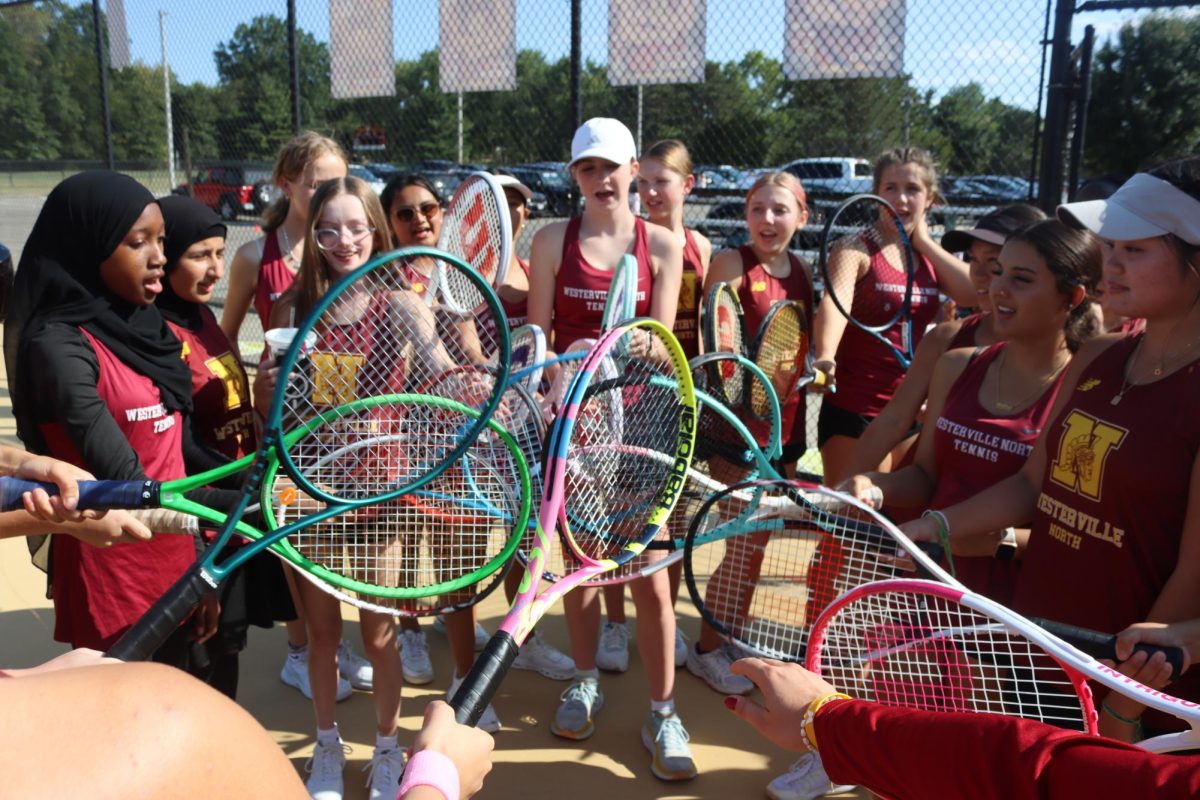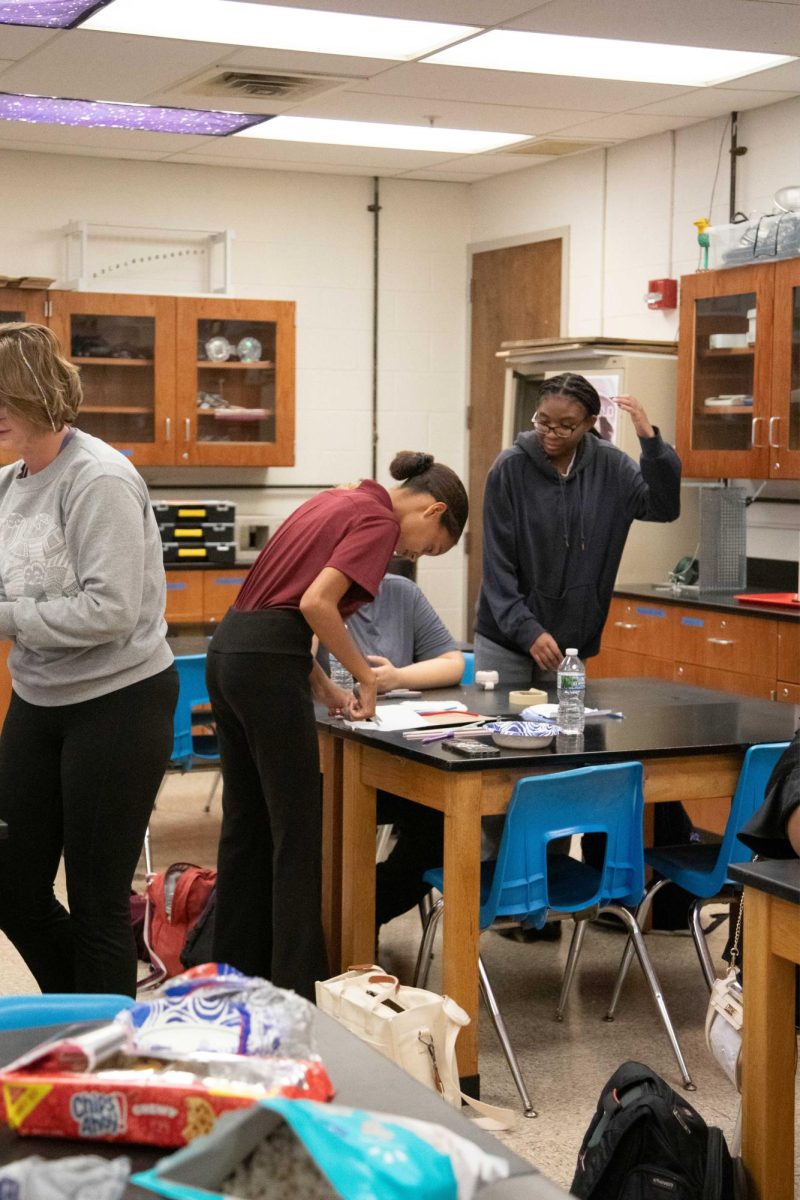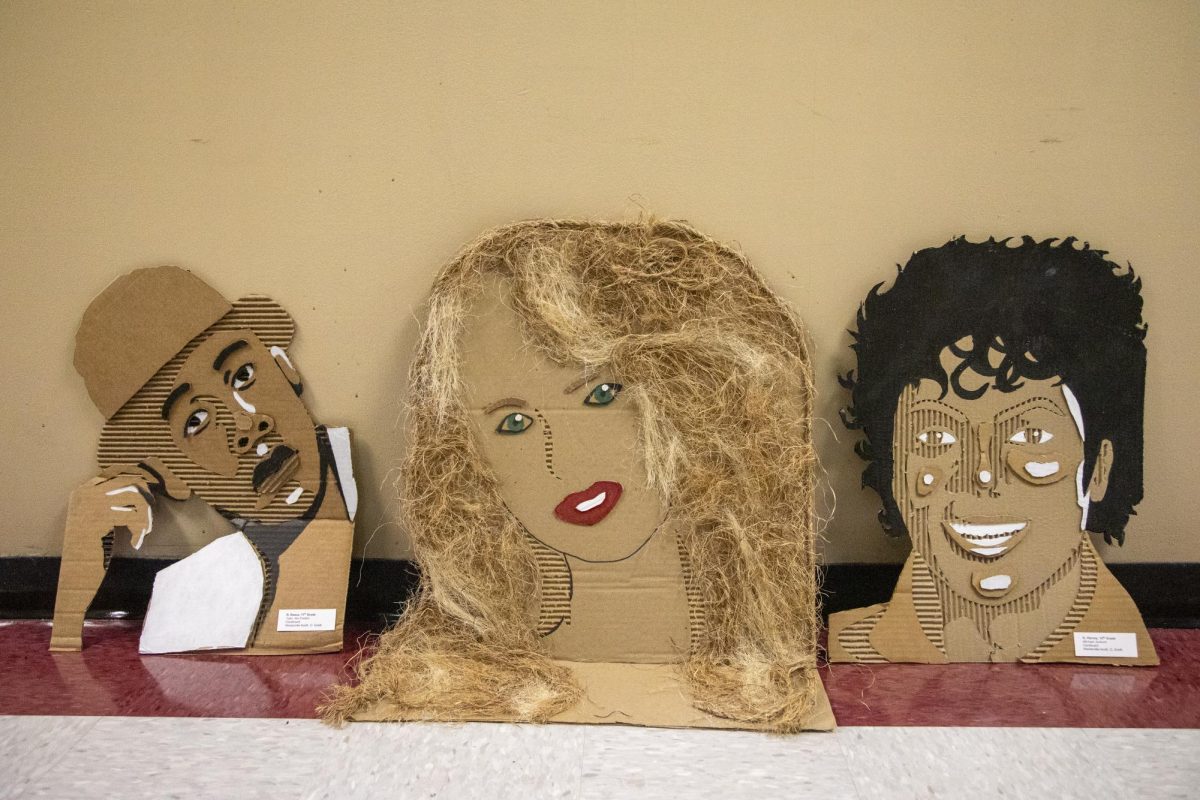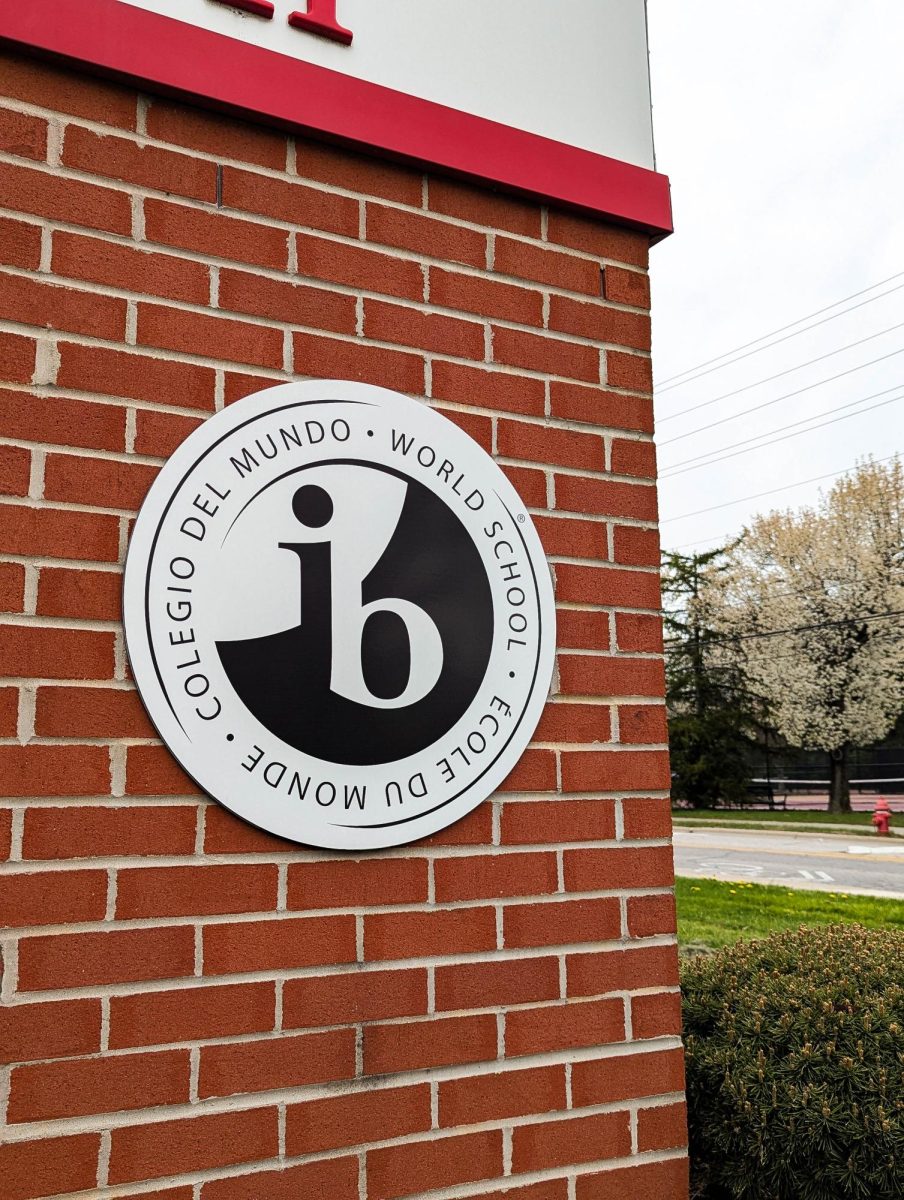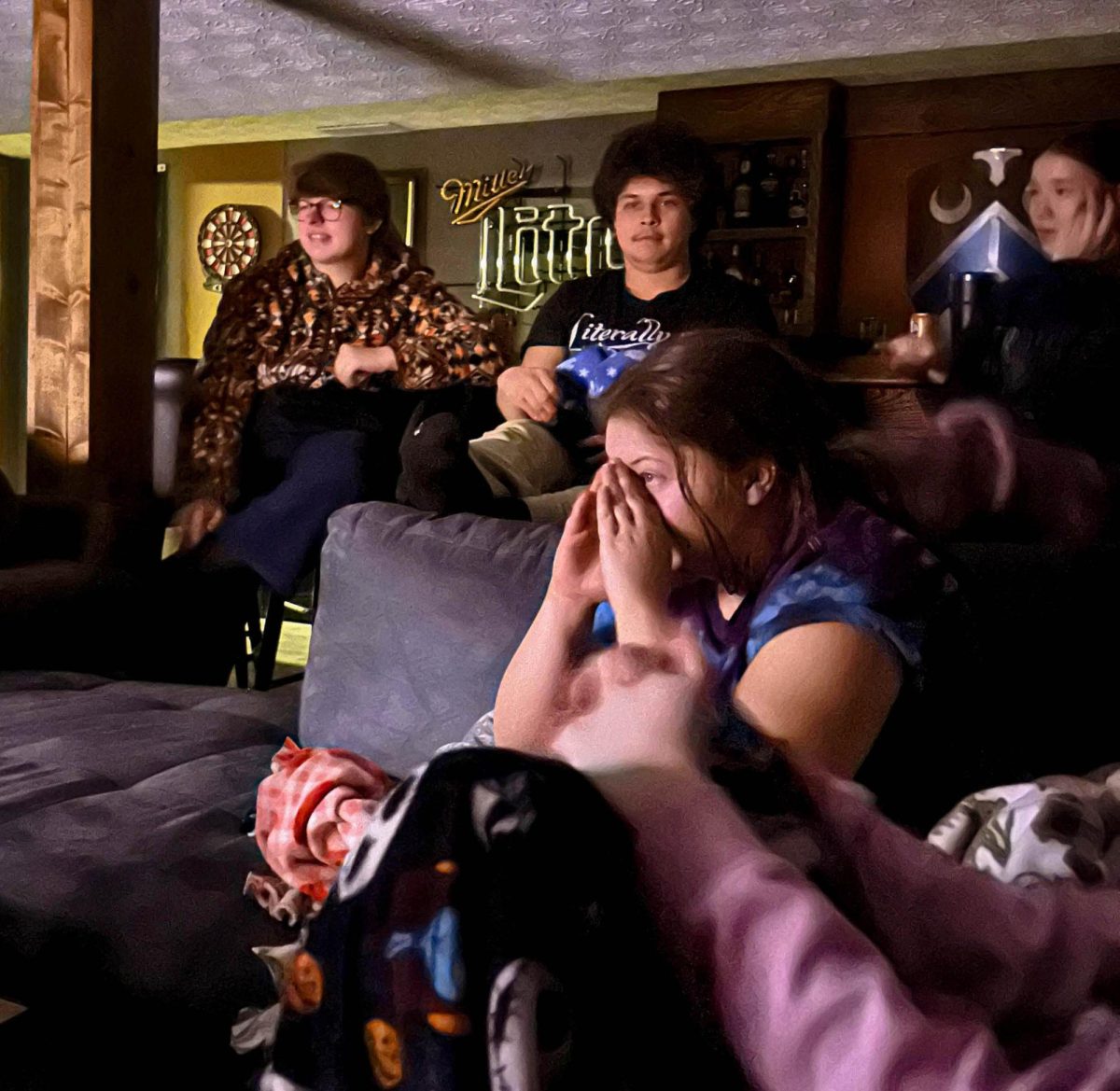The overhead lights hanging from the tall ceilings shine onto Ceramics 1 and 2 students at Westerville North as they mold their ideas into creations. Students that decide to take Ceramics 1 and 2 are people who are eager to create and get hands-on experience: a major contrast compared to a typical high school classroom.
The art classrooms of the 259 hallway consists of pieces of colorful artwork scattered across the walls and resting on any surface in sight holding the creations of the students. These art rooms are filled with thoughts and ideas that come to life through the students’ brain and body connections; whether it’s on a sheet of paper, or molded into a vase.

Throughout the semester-long class, the students get involved in the material right away. One of the ceramics teachers, Tom Lynch, starts off the semester by working with cardboard, crafting sculptures such as origami and designing realistic shoes, and then moving on the clay sculptures in the second quarter. “My favorite project is probably working with Styrofoam,” Lynch says.
Doug Smith, the other ceramics teacher, has a similar set up: his classes use all of these different materials in the first quarter, and then only ceramics the second. His classroom projects consist of paper craft masks, wire sculpture, cardboard portraits, and floral foam sculptures throughout the first quarter. In the second quarter is when students start getting into clay creations, adding to the variety of three dimensional media.
A typical class size for Ceramics 1 is around 28 students, whereas Ceramics 2 ranges around 17 students per class period. When it comes time for projects, the process and the presentation are both essential parts of the projects. Compared to stereotypical tests, homework, and lectures; the art room pursues elements of work ethic, creativity, and hands-on learning. This culture of learning forms another outlet for students to express themselves through three dimensional media.
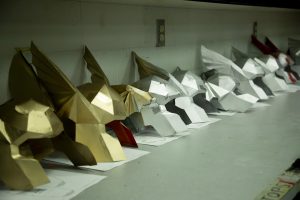
The ceramics course is all about transferring ideas into reality: “Everyone is capable of different things,” Lynch adds. Ceramics 1 is more about learning the basics and beginning to embrace creativity. While there is some freedom in the project guidelines, there is “way more room for [freedom on projects] in Ceramics 2,” Lynch says.
He also ensures that there will always be something to do, saying “I like getting up in the medium and being hands on. The best way is to learn by doing.”
Taking Ceramics 1 and 2 is a great way to reach the 0.5 Fine Arts credit: it allows the students to gain hands-on experience and take pride in creating something of their own. The art room environment allows students to have the opportunity to safely make mistakes and learn to work with them instead of against them.










